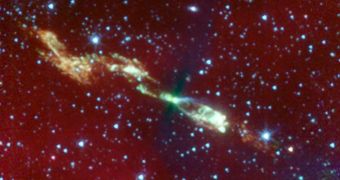A new study conducted using the NASA Spitzer Space Telescope observed L1157, a stellar nursery located about 800 light-years away from Earth. The investigation was finally able to determine why the area contains such large amounts of water and ammonia.
A model created by Izaskun Jimenez-Serra, an astronomer at the Harvard-Smithsonian Center for Astrophysics (CfA), explains how chemical processes that lead to the development of organic molecules may occur in deep space.
Information obtained from these models were combined with data on young stars, collected using the ESA Herschel Space Observatory. The data showed that the temperature range present around these celestial bodies is the reason why so much water, formaldehyde, ammonia, and methanol are present.
This represents the first study that can elegantly model the origins of some very mysterious chemicals, which have puzzled astronomers and astrophysicists for quite some time.

 14 DAY TRIAL //
14 DAY TRIAL //